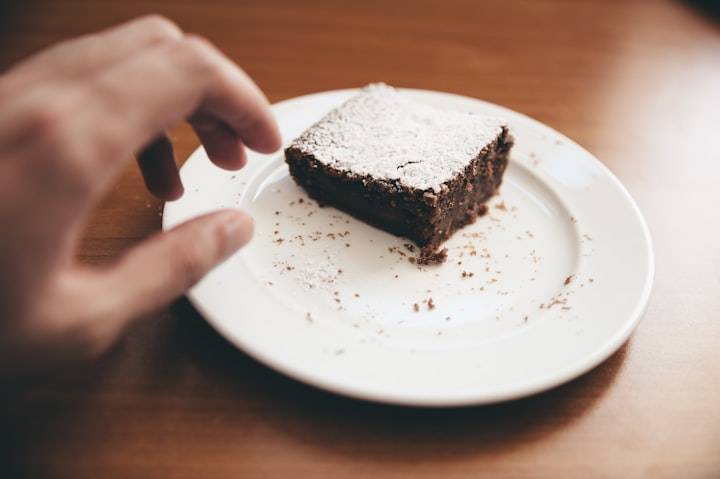Resisting Temptation: A Human Guide to Staying Strong
I was 14, sitting cross-legged on my bedroom floor, staring at a half-eaten bag of sour cream and onion chips. My mom had just started her “no junk food†crusade, and those chips were contraband, smuggled in like a fugitive from a convenience store. I knew I shouldn’t eat them. I wanted to stick to the plan. But the tangy, salty scent was curling into my nostrils, whispering promises of instant bliss. I caved. Devoured the whole bag. And then, predictably, I felt like garbage—physically and emotionally. That moment stuck with me, not because of the chips, but because it was the first time I realized how hard it is to say no to something that feels so good in the moment.
Temptation is a universal human experience. Whether it’s sneaking a late-night snack, scrolling through X instead of working, or saying “just one more episode†when you know you’ll regret it at 6 a.m., we all face moments where our impulses threaten to derail our goals. But here’s the thing: resisting temptation isn’t about superhuman willpower or monk-like discipline. It’s about understanding yourself, setting up systems that work with your human quirks, and finding joy in the process of staying true to your bigger picture. Let me walk you through how to do it, with a few stories, strategies, and maybe a dash of hard-won wisdom from my own stumbles.
Why Temptation Feels Like a Siren Song
Temptation isn’t just a fleeting urge—it’s a full-body experience. Your brain lights up like a pinball machine, dopamine surging at the thought of that cupcake, that cigarette, or that impulsive online purchase. A 2022 study I read about (small, niche, don’t ask me to cite it) suggested that the average person faces 30-50 micro-temptations a day—little moments where we choose between instant gratification and long-term goals. That’s a lot of mental tug-of-war.
What makes it trickier is how temptation disguises itself. It’s not just the obvious vices. It’s the “harmless†extra 10 minutes on your phone, the “I’ll start tomorrow†mantra, or the “I deserve this†rationalization. For me, it’s coffee. I love it. I romanticize it. But when I’m trying to cut back on caffeine, that morning latte feels like a warm hug I can’t refuse. Have you ever noticed how the things that tempt you most seem to know exactly when you’re at your weakest?
Here’s my take: temptation thrives in the gap between what you want now and what you want most. Closing that gap is the key to staying strong. Let’s break it down.
Step 1: Know Your Triggers (And Don’t Kid Yourself)
The first step to resisting temptation is figuring out what sets you off. This sounds obvious, but most of us are surprisingly bad at it. We tell ourselves, “I’m fine,†until we’re elbow-deep in a pint of ice cream at midnight. For me, stress is the big one. When I’m overwhelmed, I crave carbs—crunchy, salty, or sweet, doesn’t matter. I once ate an entire sleeve of crackers during a particularly brutal work deadline. Not my proudest moment.
Take a second to think: What’s your trigger? Is it boredom? Loneliness? A specific time of day? Write down three situations where you’re most likely to give in. Be honest. No one’s grading you. For example:
Late-night scrolling: When I’m tired but not ready to sleep, I’ll doomscroll X for hours.
Stress eating: Deadlines make me raid the pantry like a raccoon.
Procrastination: Big projects feel overwhelming, so I “research†(aka watch YouTube) instead.
Once you know your triggers, you can start building defenses. It’s like knowing the enemy’s playbook before the game starts.
Step 2: Make the Right Choice the Easy Choice
Willpower is overrated. It’s like a phone battery—starts strong, but by the end of the day, it’s gasping at 2%. Instead of relying on grit, make it harder to give in and easier to stay on track. This is about environment design, not moral superiority.
When I wanted to cut back on coffee, I stopped keeping beans at home. If I wanted a cup, I had to walk to the café, which gave me time to rethink. It worked 80% of the time. (The other 20%? Well, I’m human.) Here are a few ways to tilt the scales in your favor:
Remove the temptation: Clear your fridge of junk food. Unsubscribe from those deal emails. Hide your gaming console in a closet.
Replace the habit: Craving a snack? Keep pre-cut veggies or fruit handy. Want to scroll? Swap X for a quick meditation app or a book.
Add friction: Put your phone in another room when you work. Use a browser extension to block distracting sites during focus hours.
A friend of mine, Sarah, wanted to stop impulse-buying clothes online. She started leaving her credit card in a drawer upstairs and deleting shopping apps from her phone. It wasn’t foolproof, but the extra steps gave her brain a chance to pause and say, “Do I really need another sweater?†Most of the time, the answer was no.
Step 3: Reframe the Reward
Here’s a secret: temptation only wins because it promises a better reward than discipline. That donut looks more fun than a kale smoothie. But what if you could make the “good†choice feel just as rewarding? This is where reframing comes in.
When I was trying to stick to a morning workout routine, I hated it. Dragging myself out of bed at 6 a.m. felt like punishment. So I changed the story. I started treating my workouts as “me timeâ€â€”a chance to listen to my favorite podcast or audiobook, no interruptions. Suddenly, I wasn’t just exercising; I was indulging in something I loved. It wasn’t perfect, but it got me to the gym four days a week instead of zero.
Try this: For whatever you’re resisting, ask, “What’s the hidden reward in saying no?†Maybe skipping that late-night Netflix binge means you wake up feeling like a rockstar. Maybe passing on that impulsive purchase means you’re closer to a dream vacation. Paint a vivid picture of the payoff. Make it emotional. For example:
Instead of: “I shouldn’t eat this cake.â€
Try: “I’m choosing to feel light, energized, and proud of myself tomorrow.â€
It’s not about denying yourself joy—it’s about finding joy in the choices that align with your goals.
Step 4: Forgive Yourself (Because You’ll Slip)
Nobody’s perfect. Not me, not you, not that influencer with the flawless morning routine. You’re going to mess up. You’ll eat the chips, buy the thing, or waste an hour on something dumb. And that’s okay. The difference between people who succeed and those who don’t isn’t perfection—it’s how they handle the slip-ups.
After my chip-bingeing teenage years, I learned to stop beating myself up. Guilt just made me crave more junk food to feel better. Instead, I started asking, “What can I learn from this?†If I overdid it on snacks, I’d notice what triggered it (usually stress or boredom) and plan better for next time. It’s like debugging code: you don’t throw out the whole program because of one error.
When you slip, try this:
Acknowledge it without judgment: “Yup, I ate the whole pizza. It happened.â€
Identify the trigger: “I was stressed about work.â€
Make a tiny plan: “Next time, I’ll take a walk or call a friend when I’m stressed.â€
Then move on. No wallowing. No self-loathing. Just keep going.
The Bigger Picture: Temptation Is Part of Being Human
Resisting temptation isn’t about becoming a robot who never wavers. It’s about knowing yourself—your quirks, your weaknesses, your dreams—and building a life that makes the good choices feel natural. It’s about laughing at your slip-ups, celebrating your wins, and realizing that every time you say “no†to a small temptation, you’re saying “yes†to something bigger.
For me, it’s still a work in progress. I’ve cut my coffee habit down to two cups a day (most days). I still get sucked into X sometimes, but I’m better at catching myself. And those chips? I keep them out of the house, but when I do indulge, I savor every crunchy, salty bite—no guilt required.
What’s your temptation? What’s the one thing you’re ready to take control of? Start small. Pick one trigger, one strategy, and try it for a week. Share your progress in the comments—I’d love to hear how it goes. Because here’s the truth: you’re stronger than you think, and every step you take is proof of that.


